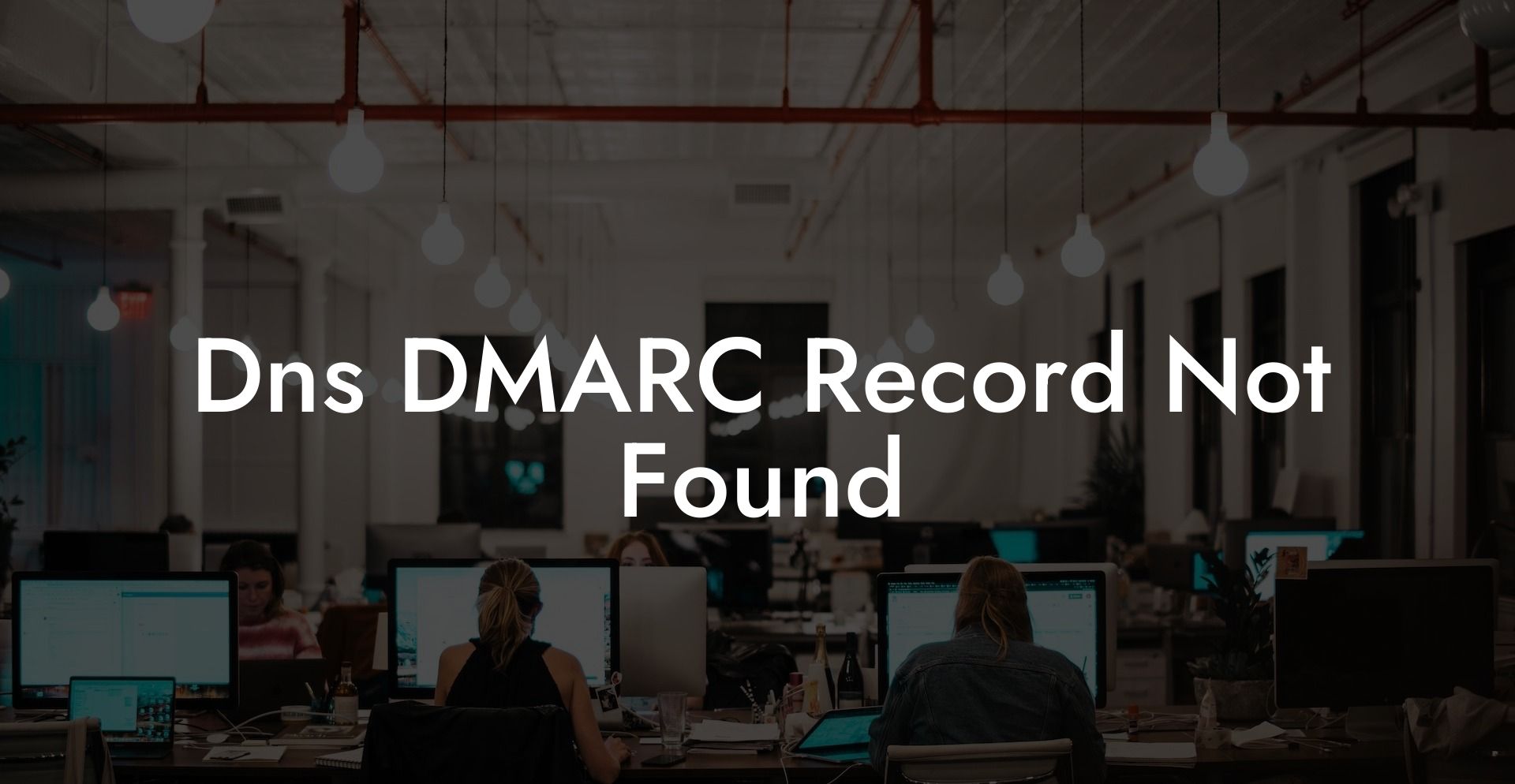The world of cybersecurity can be a daunting space, especially when seemingly complex issues arise that leave your head spinning. One such issue is the dreaded "DNS DMARC record not found" error. But fear not, this article aims to break down what DMARC is, why it's important, how it works, and how to fix this error.
Dns DMARC Record Not Found Table of Contents
What is DMARC?
DMARC, or Domain-based Message Authentication, Reporting, and Conformance, is an email authentication protocol that enables domain owners to protect their domains from unauthorized use, such as phishing and email spoofing. By using DMARC, domain owners can specify the email authentication policies to be followed by email receivers, ensuring only authorized senders can use the domain.
Why DMARC is Important
- DMARC helps protect your brand reputation by preventing unauthorized use of your domain in phishing attacks and email spoofing.
- It improves deliverability by ensuring your emails are properly authenticated, increasing the likelihood they will be delivered to the recipient's inbox rather than being filtered as spam.
- DMARC records provide valuable feedback to domain owners, allowing them to monitor and respond to any issues with email authentication.
How DMARC Works
Protect Your Data Today With a Secure Password Manager. Our Top Password Managers:
DMARC builds upon two existing email authentication methods: SPF (Sender Policy Framework) and DKIM (DomainKeys Identified Mail). SPF allows domain owners to specify which IP addresses are authorized to send email on behalf of the domain, while DKIM adds a digital signature to emails that can be validated by the recipient.
When a DMARC policy is in place, email receivers will check incoming emails against these authentication methods. If the email passes both SPF and DKIM checks, the DMARC check is successful. If it fails either check, the email is subject to the DMARC policy set by the domain owner (e.g., reject, quarantine, or no action).
Fixing 'DNS DMARC Record Not Found'
If you encounter the "DNS DMARC record not found" error, it means your domain does not currently have a DMARC record set up. To fix this issue, follow these steps:
- Ensure your domain has valid SPF and DKIM records in place. These are prerequisites for setting up a DMARC record.
- Create a DMARC record. A DMARC record is a TXT record added to your domain's DNS settings. It should include your preferred DMARC policy (reject, quarantine, or none), reporting email addresses, and any other desired options.
- Once your DMARC record is in place, you may need to wait a few hours for DNS propagation before the "DNS DMARC record not found" error is resolved.
- Monitor and analyze DMARC reports to ensure your emails are being authenticated correctly and to detect any potential issues or unauthorized use of your domain.
Dns DMARC Record Not Found Example:
For instance, you own the domain "example.com" and have already set up valid SPF and DKIM records. To create a DMARC record, you could add the following TXT record to your domain's DNS settings:
_dmarc.example.com. 3600 IN TXT "v=DMARC1; p=reject; rua=mailto:dmarcreports@example.com"
In this example, the "v=DMARC1" indicates the DMARC version, "p=reject" specifies the policy to reject emails that fail DMARC authentication, and "rua=mailto:dmarcreports@example.com" defines the email address to receive aggregated DMARC reports.
Congratulations! You have successfully navigated the world of DMARC and learned how to resolve the "DNS DMARC record not found" error. By implementing DMARC, you're taking an essential step in enhancing your domain's cybersecurity and protecting your brand's reputation. Don't forget to share this article with others who may benefit from understanding the importance of DMARC and how to fix this common issue. Explore other informative guides on Voice Phishing for more cybersecurity insights.
Protect Your Data Today With a Secure Password Manager. Our Top Password Managers:















